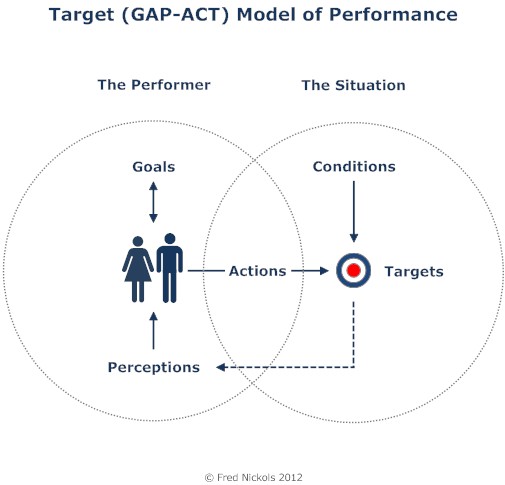

My Objective is to Help You Achieve Yours

|
To achieve a result, any
result, we must act, we must change things.
To do that, we must control them, we must
be able to alter them, so they are the way we want them. We are, then,
“living control systems,” and control theory can tell us a great deal
about human behavior and performance. Shown above is the GAP-ACT Model, also known as The Target Model.
It is based
on Perceptual Control Theory (PCT) as developed and articulated by the late
William T. Powers (1926-2013). PCT asserts that people are purposeful, living
control systems, whose behavior shapes its consequences instead of the
other way around. PCT is a feedback-governed view of human
behavior. It holds that we target certain variables for control;
we compare our perceptions of the current state of those variables with
our goal state or reference condition for those variables; and, if
unacceptable gaps exist, we behave in ways that serve to close them.
Thus it is that our behavior serves to control our perceptions.
There are, however, other actors and factors at work that influence the
same variables we are trying to control. Ordinarily these
“disturbances” as they are known in PCT are compensated for and pose no
problem. On occasion they can prove overwhelming. Our
control is far from perfect.
The GAP-ACT Model provides useful
insights into human behavior and performance as well as ideas regarding ways to improve performance in the workplace.
It also provides ideas and insights regarding
performance problems and their solutions.
The GAP-ACT Model has been proven in practice for
more than 30 years. I am available to make presentations and conduct training related to The GAP-ACT Model. I also provide consulting and coaching assistance in applying the model. If you have any questions, you can use the Questions link at the bottom of this page to send them to me and I will get back to you.
|
NOTE: All the articles listed below are in PDF format
This page last updated on September 9, 2024